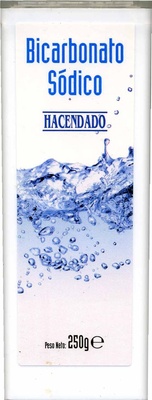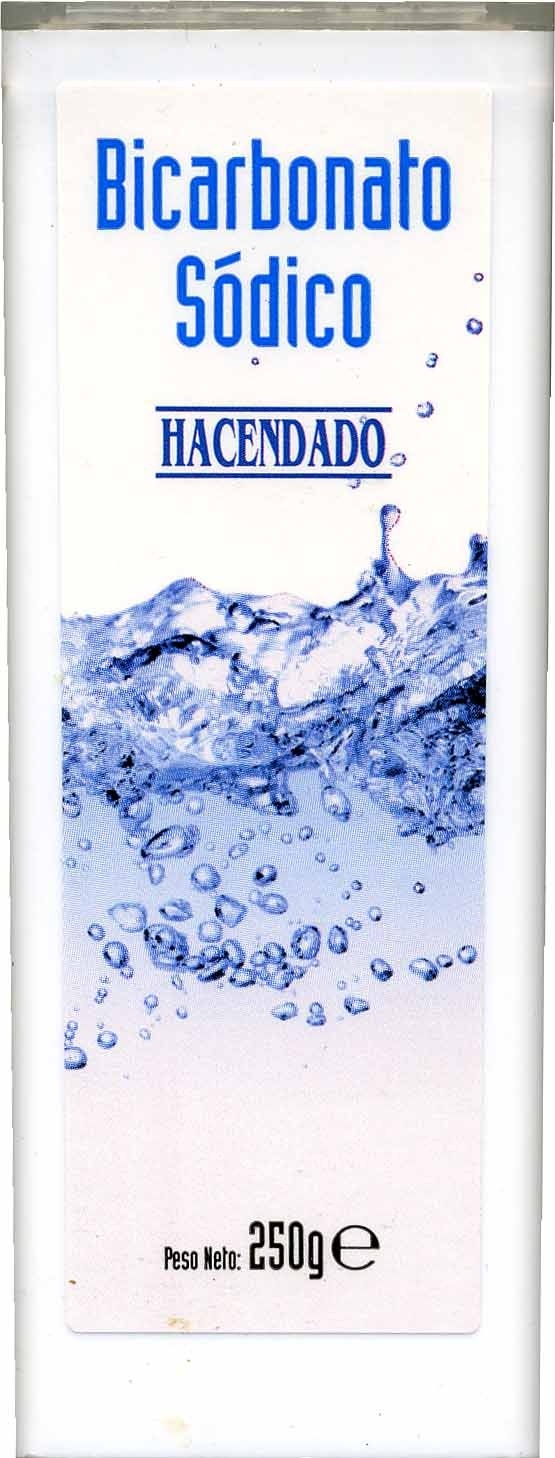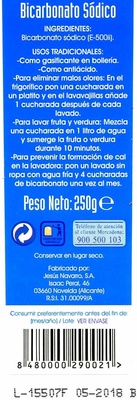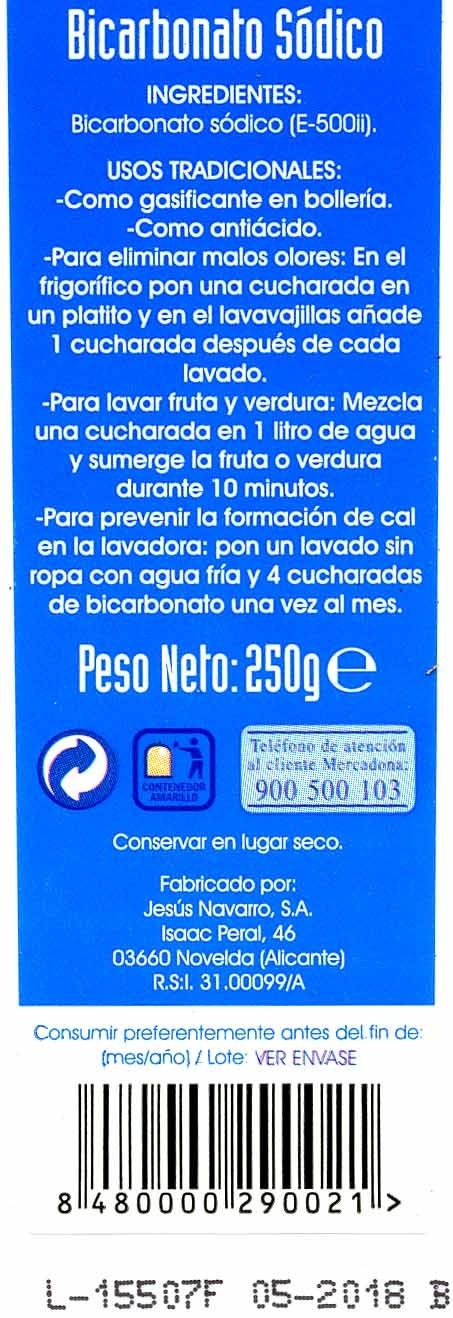Bicarbonato sódico - Hacendado - 250 g
Aquesta pàgina del producte no està completa. Podeu ajudar a completar-la editant-la i afegint-hi més dades a partir de les fotos ja disponibles, o fent-ne més amb l'aplicació de androide o iPhone / iPad. Gràcies!
×
Codi de barres: 8480000290021 (EAN / EAN-13)
Nom comú: Bicarbonato sódico
Quantitat: 250 g
Empaquetament: es:Bote de plástico
Marques: Hacendado
Categories: Additius alimentaris, en:Anticaking agents, en:Bicarbonates of soda
Etiquetes, certificacions, premis: Vegetarià, Vegà
Llocs de fabricació o processament: Novelda, Alicante (provincia), Comunidad Valenciana, España
Codi de traçabilitat: ES 31.00099/A CE, ENVASADOR:, JESÚS NAVARRO S.A.
Botigues: Mercadona
Països on es va vendre: Espanya
Matching with your preferences
Entorn
Petjada de carboni
Empaquetament
Transport
Report a problem
Fonts de dades
Producte afegit per openfoodfacts-contributors
Última modificació de la pàgina del producte per packbot.
La pàgina del producte, també editada per javichu, musarana, tacite-mass-editor, yuka.WS84akY0Z2ordDB6Z01BWTNRamw4YzU0bnNiMlVUT3hBY2s3SUE9PQ.








